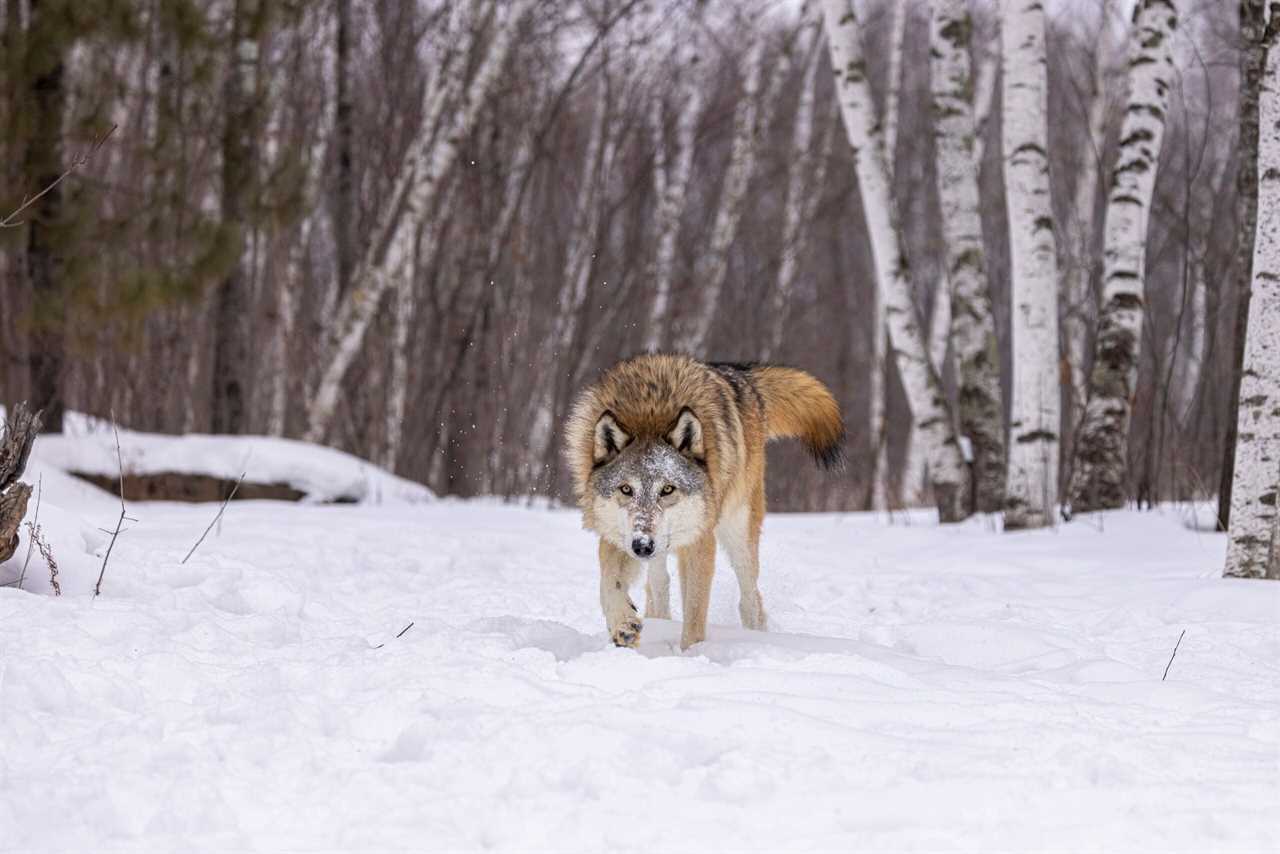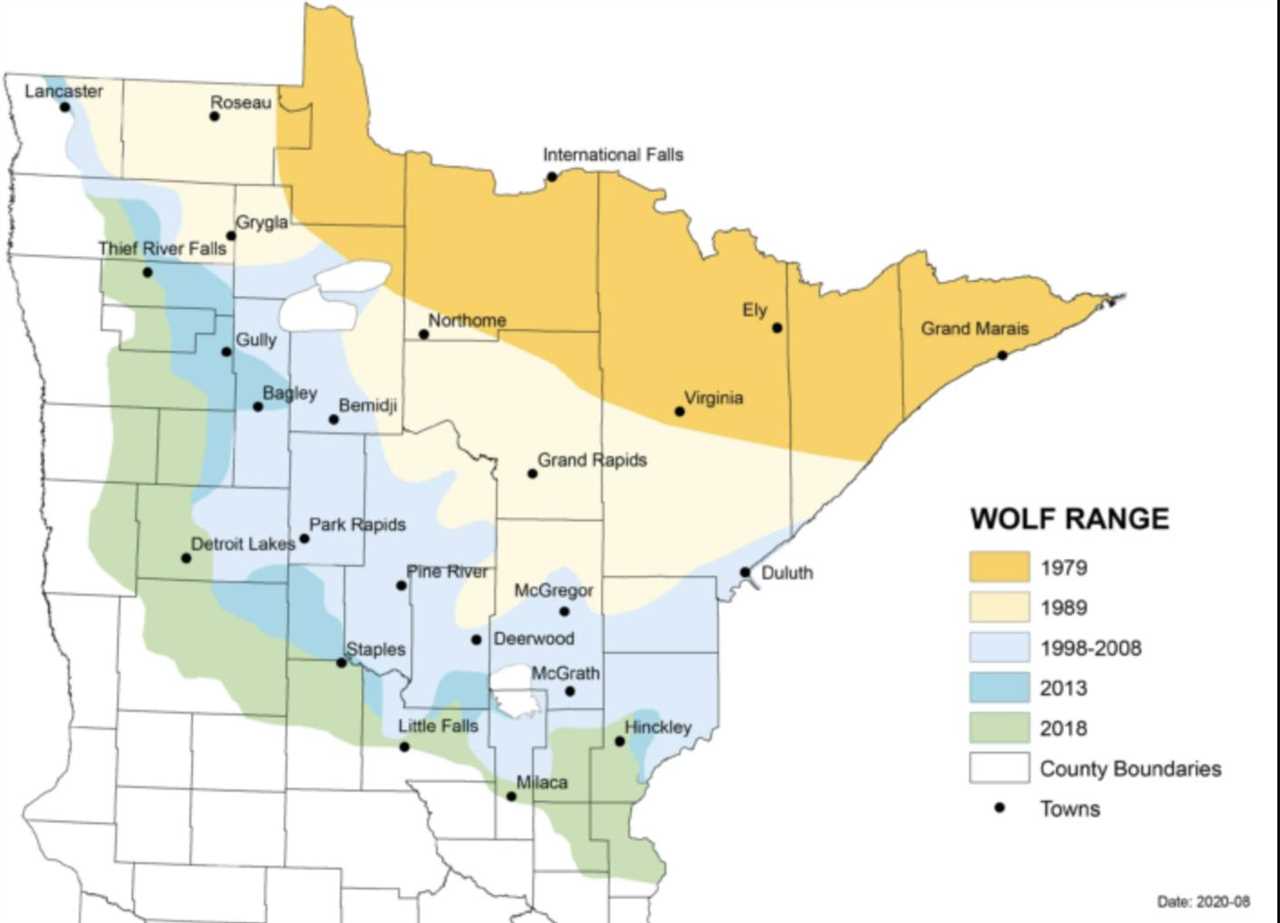Lone wolf howls in Minnesota. Jerry & Barb Jividen / Getty Images
In December, the Minnesota Department of Natural Resources released its first updated wolf management plan since 2001. The revised plan serves as a guide for supporting the state’s thriving wolf population over the next ten years. It also reopens the door to wolf hunting in Minnesota by creating a framework for how the state will approach hunting and trapping seasons if the species is delisted at the federal level .
The updated Wolf Plan was developed with the help of an advisory committee that brought together wolf advocates, ranchers, biologists, hunters, and other stakeholders. The DNR also sought guidance from tribal groups and conducted public opinion surveys during the process.
“The plan reflects the breadth of input received through the process to update the plan,” the Minnesota DNR explained in a press release. “Information in the plan describes current knowledge of the wolf population, Minnesotans’ attitudes toward wolves, and guides the approach to the future conservation and management of wolves in Minnesota.
What’s Keeping Minnesota from Bringing Back Wolf Hunting?
Importantly, the DNR included the wolf hunting and trapping section as an appendix to the Wolf Plan itself. This is because, for the time being, any discussion around these activities in the state is purely conditional. Minnesota doesn’t have the power to manage its own gray wolf population because the species is still federally protected under the Endangered Species Act.
This management status is the most significant barrier to bringing back wolf hunting in Minnesota. The MDNR’s large carnivore specialist Dan Stark clarifies that the current framework for wolf hunting will only be considered if the federal government delists the species.
“There is a framework in our plan, describing how the DNR will decide whether to establish a season once federal protections are removed, and then how a season would be structured,” Stark tells Outdoor Life. “I think it’s a commitment that we will go through with once the wolf is delisted.”
What Does This Framework Look Like?

There are more gray wolves in Minnesota than any other Lower 48 state. Stan Tekiela Author / Naturalist / Wildlife Photographer / Getty Images
The first phase of implementation would be led by the state game commission. The commission would first consult with tribes in Minnesota and allow public comment to ensure that there is adequate support for hunting and/or trapping seasons. It would then consider biological factors such as prey density and the state’s overall wolf population.
According to the appendix section, the state would be able to vote on possible wolf hunts so long as the population stays above a threshold of 1,600 wolves. This is the minimum number needed to sustain the U.S. Fish and Wildlife Service’s recovery goal of 1,400 wolves, set in 1992.
Read Next: Great Lakes States Are Divided on Wolf Hunting Plans
As the population increases above 1,600 wolves, the framework dictates that larger hunting quotas could potentially be allowed as long as they fall in line with the “maximum harvest rate” set by the DNR’s Wolf Advisory Committee. If the population is between 1,600 and 2,000, this harvest rate would be around 5 percent. That rate goes up to 5-10 percent if the population surpasses 2,000, and it jumps to 10-20 percent with a population of 2,500-3,000 wolves. If the number of wolves in the state grows beyond 3,000, it could set the maximum harvest rate even higher.
These numbers are important to consider because Minnesota’s wolf population is currently around 2,700, according to DNR estimates. So, unless wolf numbers take a dive, the MDNR could potentially allow hunters to harvest roughly 270 to 540 wolves in a future hunting season.
Thriving but Protected

The wolf range in Minnesota. Wolves were never extirpated from the state, even as their numbers crashed throughout the Upper Midwest. MNDNR
By the federal government’s own definition, Minnesota’s wolf population is beyond recovered. It’s currently more than double the recovery goal that USFWS set 30 years ago, and Minnesota is home to more wolves than any other U.S. state outside of Alaska. In fact, Minnesota has more wolves than Wyoming, Idaho, and Montana combined. All of these wolves fall into the larger Northern Rocky Mountain population as established by USFWS.
Advocates for delisting in Minnesota continue to point to the NRM population. Montana and Idaho’s wolves were removed from the ESA in 2011 after they surpassed the recovery goals established by the feds. Wyoming followed suit in 2017. Wolves in the Northern Rockies remain under state management, and regulated wolf hunting is now allowed in all three of these states.
So, what gives? Why delist the NRM population but not Minnesota’s?
The answer here may just come down to politics. Idaho, Montana, and Wyoming have state legislatures that generally support wolf hunting and have consistently pushed for delisting of the species. These three states have also long advocated for the hunting and trapping of other predator species like grizzly bears and mountain lions.
The Minnesota legislature, by contrast, tends to waver on its stance toward wolf hunting. After the federal government delisted gray wolves in 2011, the MDNR allowed regulated hunting seasons from 2012 to 2014, when the species was relisted. Then, just before the USFWS delisted the species yet again in 2020, the state legislature moved to permanently ban wolf hunting—something that Gov. Tim Walz has publicly supported in the past.
“A selective delisting of the wolf is something I supported in areas where the population had recovered to the point where it was warranted. The massive and the universal delisting I did not because it is not supported by good game management practices,” Walz told a reporter in 2019. “I don’t think that’s a place where sport hunting is appropriate.”
The state’s ban was never fully enacted, and wolves were placed back on the ESA in 2022 after a federal judge in San Francisco ruled the USFWS unlawfully delisted the species.
How do Minnesotans Feel About Wolf Hunting?
Whether you’re talking about black bears in New Jersey, coyotes in Illinois, or gray wolves in Colorado, predator management is always a divisive issue. Minnesota’s wolf debate is no different, which is why the MDNR conducted several public surveys to gauge how people in the state feel about wolf hunting.
These surveys found that overall, Minnesotans think positively of wolves, and they want them to remain on the landscape. This includes two vocal groups whose livelihoods are directly affected by wolves—hunting outfitters and livestock producers. Then again, wolves have always thrived here. Wildlife managers aren’t reintroducing or relocating the species, which removes some of the controversy that is currently boiling over in Colorado and other Western states.
Read Next: How Many Wolves Should There Be in Colorado?
The more divisive question is related to how we manage these animals. In one of the state surveys, 88 percent of hunters and 87 percent of livestock producers responded in favor of establishing wolf hunting seasons. However, the same survey found that nearly 50 percent of Minnesota residents were against wolf hunting. Residents also indicated that the biggest management priority for the MDNR should be to educate livestock producers on how to prevent conflicts with wolves.
Tribal agencies throughout the state have also played a significant role in managing wolves over the years, and they have traditionally opposed wolf hunting. One of the major tribes in Minnesota, the Ojibwe, views wolves as kin, and they see recreational harvest as an unjust reason for killing wolves.
Last April, the Ojibwe sent a letter to the members of the Wisconsin state legislature protesting a bill aimed at delisting the species. That letter brought up the state’s lack of consultation with tribes. The tribe also pointed to Wisconsin’s notorious 2021 wolf hunt, which led to major backlash from wolf advocates when hunters killed over 216 wolves in three days—nearly double the state-sanctioned quota.
The Future of Wolf Hunting in Minnesota Remains Uncertain
The federal management status of wolves is currently up in the air, with legal challenges being mounted on all sides. The USFWS initiated a review to evaluate the status of wolves in 2021 but has not released any conclusion, and the agency is currently evaluating how the 2022 decision affects this review. Several parties have also filed an appeal of the court’s relisting decision—including an appeal that was filed by the Biden Administration last April—but none have been successful so far.
Read Next: Bounties, Petitions, and Politics: Why the Wolf War Is Only Getting More Extreme
“It’s not necessarily a conservation issue. We know that wolves, from a population standpoint in Minnesota, have recovered,” says Stark. “And the state would be in a good position to manage wolves when that legal status changes.”
The post Minnesota Has the Most Wolves in the Lower 48 but Does Not Allow Wolf Hunting. Here’s Why appeared first on Outdoor Life.
Articles may contain affiliate links which enable us to share in the revenue of any purchases made.
By: Keegan Sentner
Title: Minnesota Has the Most Wolves in the Lower 48 but Does Not Allow Wolf Hunting. Here’s Why
Sourced From: www.outdoorlife.com/conservation/minnesota-wolf-hunting/
Published Date: Fri, 10 Feb 2023 22:12:50 +0000
----------------------------------------------
Did you miss our previous article...
https://manstuffnews.com/weekend-warriors/poisonous-yew-this-backyard-ornamental-kills-wildlifeand-everything-else
 Backyard GrillingWeekend WarriorsAdvice from DadBeard GroomingTV Shows for Guys4x4 Off-Road CarsMens FashionSports NewsAncient Archeology World NewsPrivacy PolicyTerms And Conditions
Backyard GrillingWeekend WarriorsAdvice from DadBeard GroomingTV Shows for Guys4x4 Off-Road CarsMens FashionSports NewsAncient Archeology World NewsPrivacy PolicyTerms And Conditions
